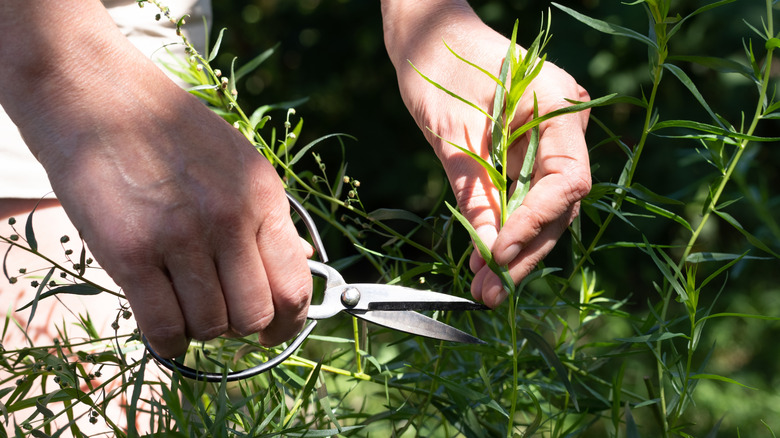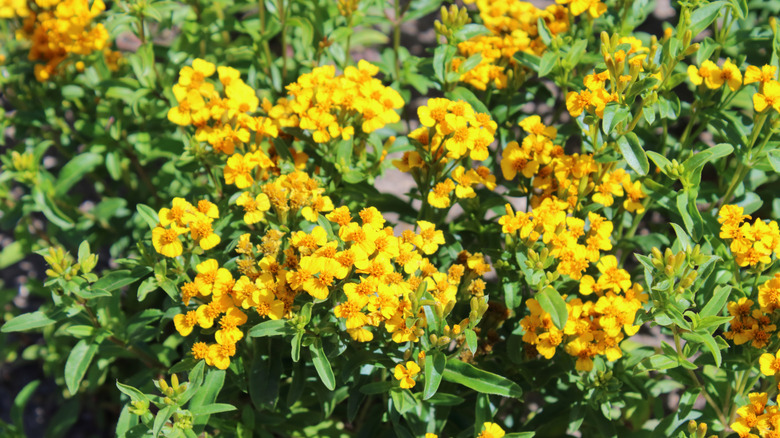The Easy-To-Grow Flowering Perennial Plant That Thrives In Full Sun And Heat
In the dog days of summer, it can be difficult to imagine how anything can grow, much less thrive. Your plants can crumble under the sun's wrath as easily as you, but some, like Tagetes lucida, love the heat. More commonly known as Mexican tarragon, mint marigold, or Mexican marigold, this unique flower is as hardy as it is beautiful, with golden yellow flowers and fragrant leaves. Both the leaves and the flowers are edible, and you can add the leaves to herb blends such as "fines herbes," a traditional mixture of cooking herbs including thyme, chervil, chives, and parsley. Mexican tarragon is best when fresh, and it can even be used to brew teas.
As you might have guessed by the name, Mexican tarragon is native to Mexico, Guatemala, and the southwest United States, but it can be grown in a variety of locations, including hot, humid places like Florida. Mexican tarragon is much easier to grow than its European cousin, Artemisia dracunculus sativa, also known as French tarragon, but it shares the same anise-like flavor, making it an approachable addition to beginner herb gardens. Because Mexican tarragon is so easy to care for, it can help you avoid some of the biggest mistakes people make when growing herbs.
Growing Mexican tarragon
When considering where to plant your Mexican tarragon, choose a place with well-draining soil and at least 18 inches between it and another plant, as the tarragon can grow to 3 feet in both height and width. It thrives in USDA Hardiness Zones 8a through 11b and grows best in full sunlight — at least 6 hours daily — with regular irrigation, but don't worry if you miss a watering day, as it's better to underwater than overwater this plant. Avoid wetting the leaves during watering, concentrating on the soil.
Mexican tarragon prefers soil with a pH of 7.0, but anywhere from 6.5 to 7.5 is acceptable. If you'd like to encourage the plant to grow larger, make sure to prune it regularly. As a perennial, Mexican tarragon will die off in the winter and return in the spring, but if you live in a climate that is hot all year, it may stick around, bringing timeless beauty to your garden for years. The seeds can be collected planted, taking approximately two weeks to germinate.
Uses for Mexican tarragon
Outside of being beautiful and easy to care for, Mexican tarragon plays well with other plants. Like other marigolds, it repels most pests, and it serves as a good companion plant to vegetables and other common herbs like parsley, rosemary, and sage. After harvesting, whether you use it in your salads or to flavor soups, any leftover parts of the plant can be added to your backyard compost pile, improving the scent and deterring pests.
Be careful when handling Mexican tarragon, as the sap and the thorns along the stems can cause a rash or irritate your skin. If you notice any unusual redness after touching the plant, wash the area with soap and water. Though most pests are repelled by the scent of Mexican tarragon, keep a watch out for slugs. If you notice them crawling around — and eating — your tarragon, surround your plants with a barrier of cinders or crushed oyster shells.


